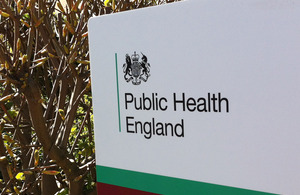Improving primary prevention of falls for Newcastle’s over 65s
The Safe and Well falls prevention project provided identification and referral of the vulnerable at increased risk of falls, as well as social benefits.

Summary
Newcastle Public Health worked with the Tyne and Wear Fire and Rescue Service to conduct Safe and Well visits to the homes of those aged 65 and over, with a focus on preventing falls.
Background
Fire and rescue services in England have been working in a preventative role for some time now and their interventions have contributed to a significant decrease in the number of people who die in fires. More than half of all fire and rescue services in the UK have converted their Home Safety Checks into Safe and Well visits to reduce fire risks and improve health outcomes, using combined approaches to prevention and early intervention.
Despite Newcastle having a comprehensive falls prevention service in place, falls related hospital admission rates for those aged 65 and over have continued to increase. Austerity measures faced by the local authority impact social care provision and a decline in universal funding reduce provision of equipment such as community care alarms. As such, it was important to broaden the reach of prevention by working with the Fire and Rescue Service.
What was involved
The Fire and Rescue Service completes around 10,000 Home Safety Checks in Newcastle each year, and around 3,000 of those are Safe and Well visits to the most vulnerable clients including:
- those who have had a fire
- those who have fallen which has resulted in a fire
- those who are known to hoard in their home
- those with any other known vulnerability
The Newcastle pilot project conducted by Newcastle Public Health and Tyne and Wear Fire and Rescue Service set a target of 1,000 visits.
The Fire and Rescue Service carried out a home safety check as standard, but those aged 65 years and over were offered an enhanced visit to include the falls prevention aspect, which comprised:
- low level measures: nonslip bath mats, helping hands grabbers, taping of threadbare carpets, securing of rugs, cable tidies, letter box cages
- information: lighting, medication checks at pharmacies, eyesight checks, appropriate fitting footwear and slippers, decluttering
- onward referral: community care alarms, social care, first contact (heating referrals, mobile library, benefits advice), hoarding protocol and Community Response and Rehabilitation Team (CRRT)
In the first year of this pilot project:
- 968 visits were completed
- 702 agreed to the falls element of the visit
- 205 of those seen had fallen in the previous 12 months
- 101 of those who had fallen were already with the falls service
- 46 were referred to CRRT
- 469 bath mats were given out
- 316 helping hands were given out
What works well
This pilot project indicated that Safe and Well visits incorporating a falls prevention aspect have positive outcomes, such as identification and referral of individuals at increased risk of falls. Therefore, broadening the reach of prevention by working with the Fire and Rescue Service is evidently beneficial.
The cost of the intervention is minimal compared to the cost of the outcomes it aims to prevent. This is in part due to the Fire and Rescue Service providing their staff time as part of the project contribution.
Next steps
The success of the Newcastle project has facilitated discussions with the 4 other local authority areas covered by Tyne and Wear Fire and Rescue Service to deliver the project in each of their areas.
Newcastle Public Health provided the funding for the physical measures for the one year pilot and a second year’s funding until August 2018.
Further information
Contact Annette.payne@newcastle.gov.uk (Health Improvement Practitioner, Public Health) at Newcastle City Council.